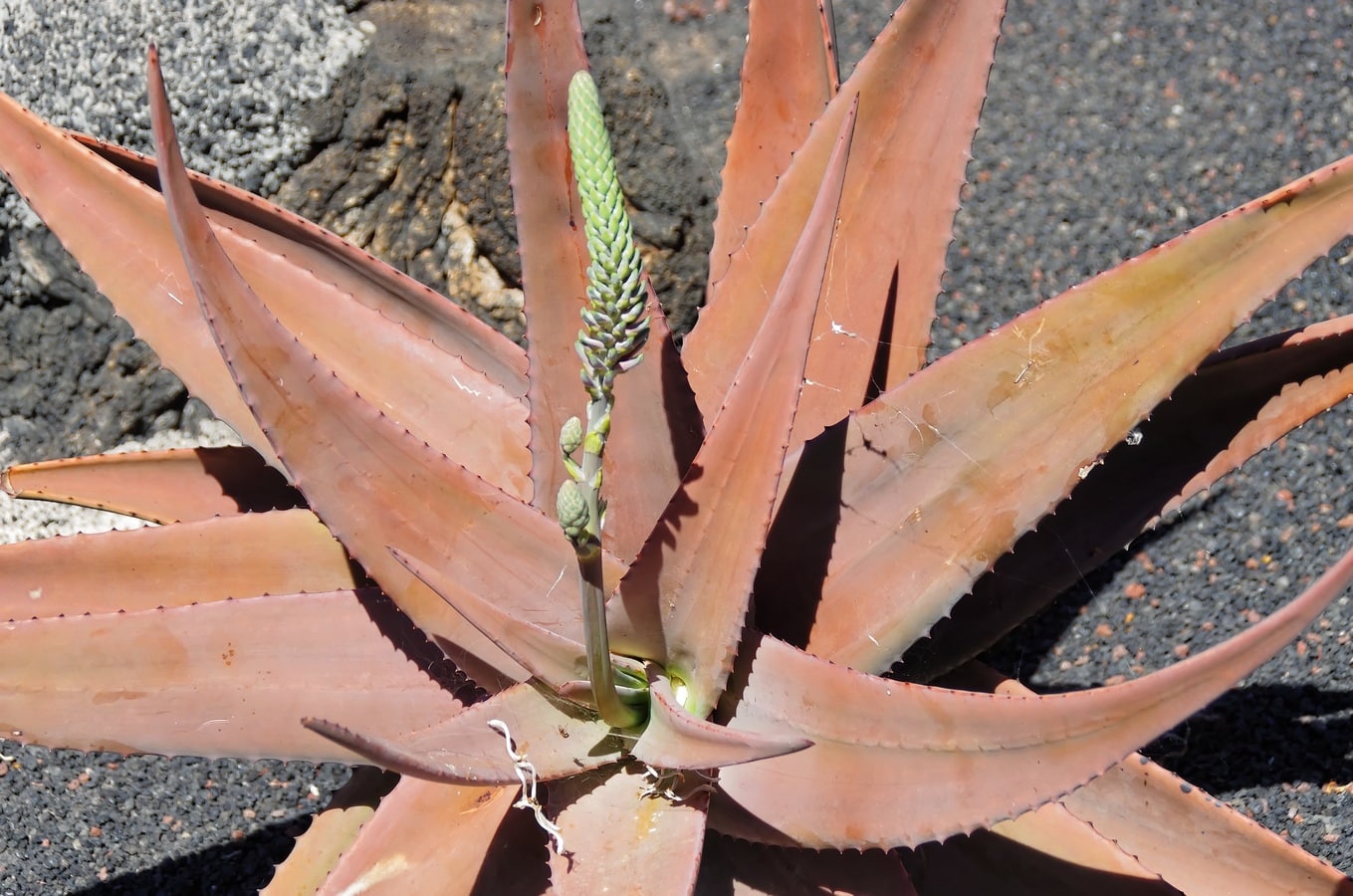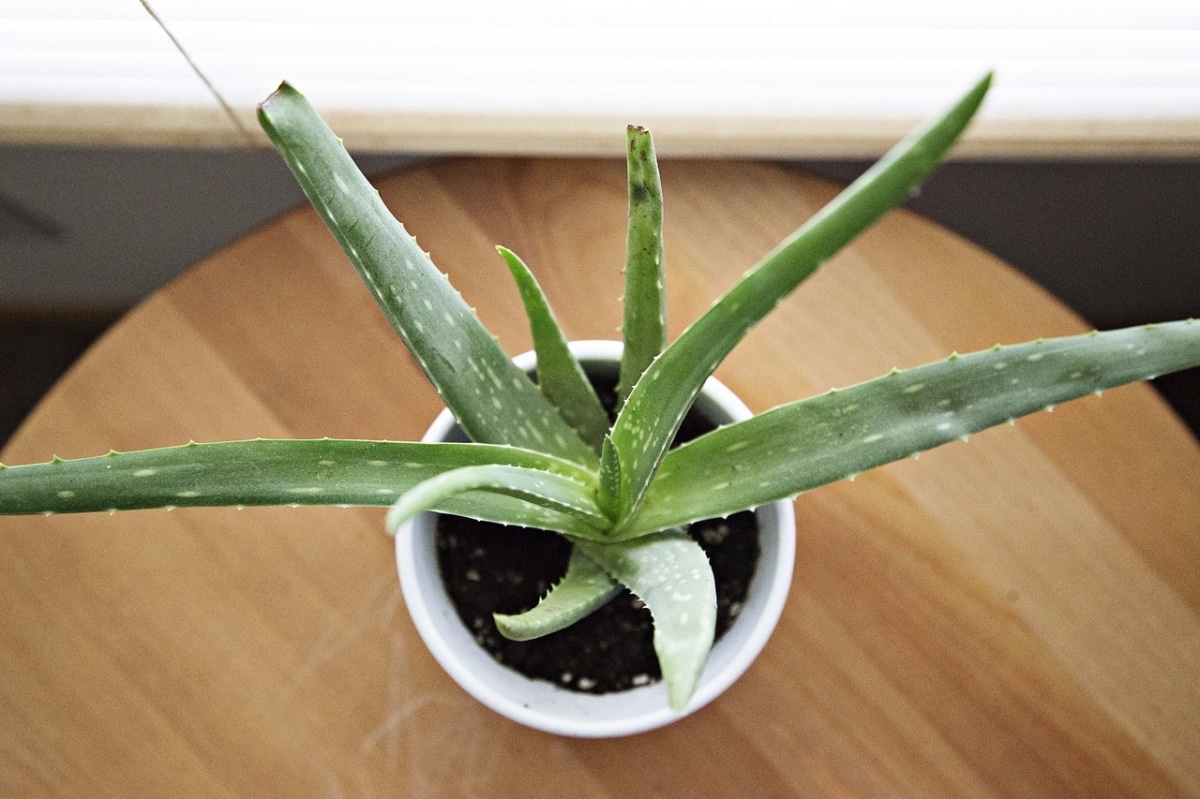
El Aloe vera It is one of the easiest succulent plants to maintain., since it does not have to be watered too frequently, and also, you can place it both on the patio or balcony, and inside your home. But sometimes there may be some problem that causes your leaves to turn brown.
Of course, when that happens, it is common for us to wonder if we are taking care of it badly, or if something is wrong with it. For this reason, I want to tell you What are the most common causes of this browning of the leaves?, and how we should act so that it can recover.
What are the causes?

When we choose to buy a aloe vera, also called aloe vera, it is highly recommended to find out about the care it requires. From my point of view, and without any intention of offending anyone, I think that we usually stay with "it is that it is an easy plant to care for", and we believe that this already tells us everything. I have done it myself on several occasions. I bought one that was supposed to be an all-rounder, very resistant, and after a few days or weeks I wonder what I'm doing wrong that is making its health worse.
Our protagonist is not too demanding, that's true, but like all plants has basic needs that, if not met, could end up sick. In the specific case of aloe vera, it can turn brown for any of these reasons:
- Direct sun: if we put the plant in a sunny exposure as soon as we buy it, or if we take it outside after having kept it inside for a long time, the leaves will burn quickly, in a matter of hours or a few days, depending on the degree of insolation (for example, in summer it will burn more quickly than in winter, since said degree of insolation is higher).
- Excess irrigation: The Aloe vera It is a crass that does not like to have the roots constantly wet. For this reason, when you water frequently, you don't give the soil time to dry out, and the plant suffers.
- Lack of irrigation: It is not very common, since we are talking about a plant that supports drought quite well, especially when it is in the ground, but it can happen. If this happens, the leaves will end up turning brown, but they will also lose their strength.
- The land is not the right one: when the soil, or the substrate in case of having it in a pot, is very heavy, the air cannot circulate well between the pores, so the roots have trouble breathing. In addition, the soil or substrate remains wet much longer than it would be necessary.
How to recover a brown aloe vera?
Now that we know the causes, let's see how we can recover our plant and get it to put out green and therefore healthy leaves again:
Protect it from direct sun
If you get used to it little by little, gradually exposing it to direct sun, there may come a time when it resists direct sun exposure. But since it is a plant that burns quickly if it is not used to it, and that grows well in semi-shade, it is preferable to have it there, protected from the sun. That is to say, It can get direct sun for a while early in the morning or late in the afternoon, but not during midday.
In the event that we have it at home, it will be equally important to keep it a little away from the windows, since when the magnifying glass effect is produced, the leaves would also burn.
Control irrigation
I have told you about excess and lack of watering. Well, now we will see what are the symptoms of both problems and how to fix it:
- Excess irrigation: the leaves lose strength, and end up turning brown. In addition, the earth will look and feel very humid, and fungi (mildew) could arise, which must be combated with fungicides such as this.
- Lack of irrigation: apart from the fact that the leaves will turn brown, we will also see that the earth looks very, very dry and that it can even have a hard time absorbing water. Also, another thing that can happen is that some pests appear, such as mealybugs, which can be fought with ecological insecticides such as diatomaceous earth (for sale here).
In the event that we have watered little or nothing to our plant, what we will do is, of course, pour water on it. We have to rehydrate her as soon as possible. If we see that the earth does not absorb said water, we will have to submerge the pot -only the pot, not the plant- in a container with water for about thirty minutes and then we will remove it.
On the other hand, If we have an aloe vera whose roots are literally drowning, we will have to take it out of the pot and remove the soil, taking care not to damage its root system.. Next, we will treat it with fungicide and we will plant it in a pot with holes in its base to which we will add substrate for succulents such as this.
Thereafter, we will water when the soil is completely dry.
Change the soil if it is not suitable
El Aloe veraAs I said, it does not support excess water in its roots. That's why we have to avoid planting it in very heavy soils, as are many of the commercial substrates that are sold almost anywhere and that usually have really low prices.
If we want it to grow well, the best thing will be to put substrate for succulents, or mix peat with 50% perlite. To improve the drainage of the pot or the soil, I recommend putting volcanic clay inside (for sale here) or arlita (for sale here).
I hope your brown aloe vera recovers as soon as possible.
